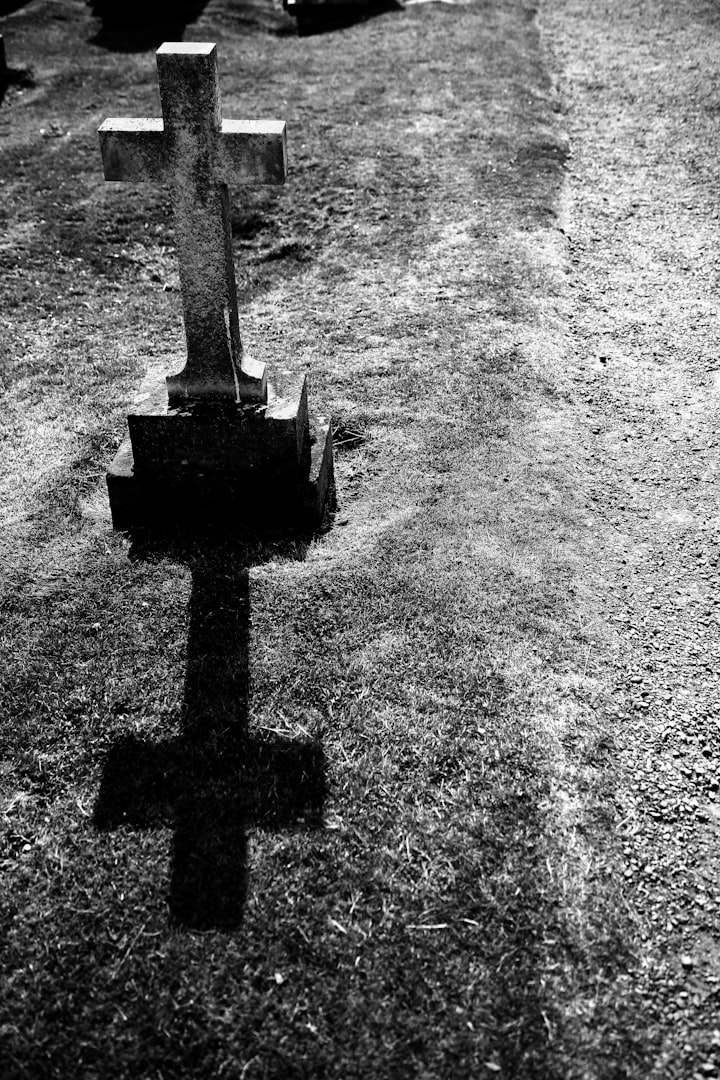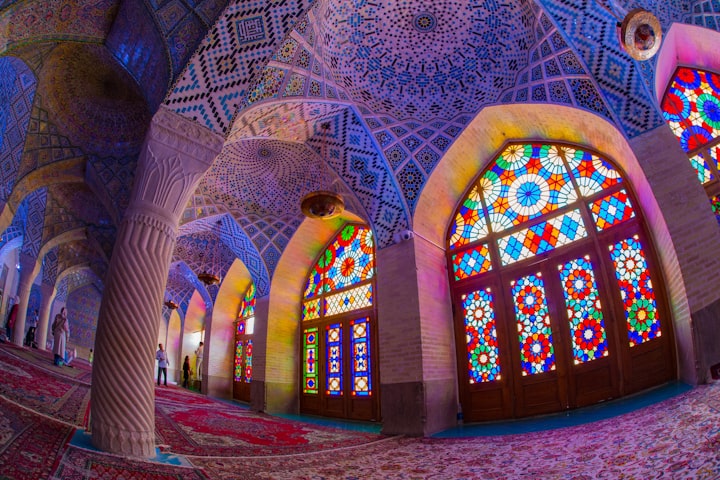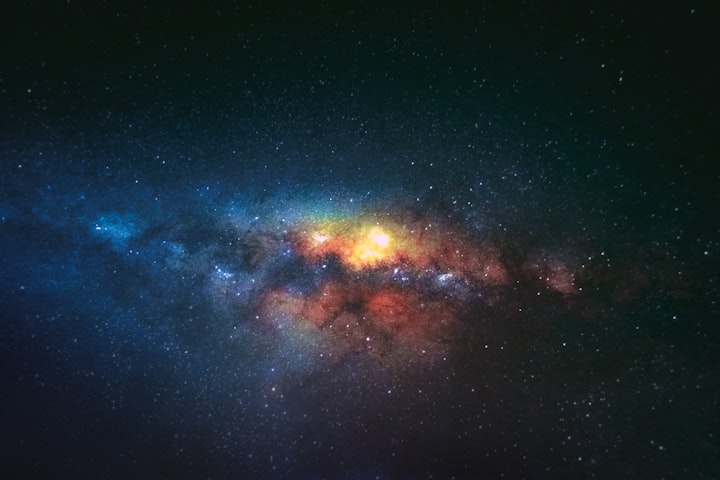
Humanity has thousands of beliefs birthed from the misunderstood and unknown. Through our perceptions we’ve breathed life into the forces beyond our control and called them gods and goddesses, paranormal phenomena, supernatural intervention, philosophical quests, or new challenges for the scientific mind. The multifaceted views of our environments and ourselves can bring an existential calm or crisis. One event we are all forced to acknowledge is death, a circumstance that has been personified, feared, respected, and flat out denied. Death is permanently somber, sometimes bittersweet, and a trigger to many wonders about life. Its paradoxical effect on all of us inspires contemplation in every facet of our lives, which is why I'd like to briefly explore the many perceptions of death throughout humanity’s history.
Death Deified

In theistic views, death has been cold, evil, non-sympathetic, and, ultimately, the voice of judgment upon the soul. The fear and respect death has earned has been portrayed with mixed emotions. There’s a gratefulness for being pressured into being accountable for one’s actions and reaping the rewards for living a life of integrity, but this can easily become a horrific self-fulfilled prophecy of damnation with little to no room for forgiveness.
Monotheism
In monotheistic terms, death is an ability or power executed by a single, all-powerful being, a god. Not all monotheistic beliefs are the same, the most well-known being Judaism, Islam, and Christianity, but they do have similar views on death. The one supreme god, who has rule over life and death, is also the power that determines what is good and evil, right and wrong, and granted all that lives free will; thus, dualism is often associated with the one god. Since life and death are under the rule of the one god, death can either be a punishment or a blessing. Death in monotheism also acknowledges the soul, which is who you are beyond your physical self. The soul’s response to death in monotheism is more or less being worthy of the blessings the god offers in exchange for obedience and/or worship. Although death in some monotheistic religions can also be represented as a messenger, angel, demon, or otherwise, death will always be under the jurisdiction of a supreme god. We can take this interpretation of death as inevitable, inescapable, and emphasizing the importance of vulnerability and surrender.

Polytheism
Polytheistic tales tell us how gods and spirits were more of a community. They were less rigid about rules and orders and are even accused of being more human than god. As there is a god for the elements in nature, fertility, space, music, and almost anything encountered in life, there is a god of death or gods associated with death. A being connected to death could be given a negative connotation for those who fear death, but when the many tales of that being are told throughout generations, they can seem more personable yet no less divine. Sometimes the ruler of death has parents, children, or a really complicated family history that affects their role, they may have lost a bet with a sibling, fell in love with the right or wrong person, understand the pain of sacrifice, bring magic to some and curses to others, allow souls that have passed on to reunite with their living relatives while watching over them, and the list goes on from there. Death in polytheism can still bring a kind of judgment or reincarnation, but it’s not so absolute. When polytheistic worshipers listen to the legends, death can be cold to the touch, completely neutral, or have a tender heart. We can take this interpretation of death as multifaceted, knowledgable, and understanding of the fairness or unfairness of what’s beyond our control.

Death Personified
When death isn’t a god or the power of a god, it becomes a culmination of symbolic representations of mortality in a culture who then makes death a sentient power fueled by collective consciousness. Death has been symbolically designed with skeletal figures, hourglasses, ethereal horses, a bladed weapon like a scythe or a sword, monochrome colors, wings, a balancing scale, masks, a boat or ferry, a gate or doorway, a blown out candle, or a fading light in the darkness. Gods associated with death can take the title of psychopomp, but so can other spirits or creatures who aren’t deified. Through their symbolic introduction, they take the role as guides and although death personified isn’t usually seen with evil intent, their job description brings the pain of loss and that is never easy to welcome. Death as a being who simply follows their nature has a presence in cultural folklore that can be interpreted as an honest omen and a lesson we all learn eventually.

Death as Fact

We’re often told that death is “a fact of life” and many take that literally. Not all interpretations of death are linked to religion or belief in a spirit. Rather than contemplating a life after physical death, the interpretation is geared toward life itself and just that.
Pantheism
“We see death as the return to nature our elements, and the end of our existence as individuals. The forms of ‘afterlife’ available to humans are natural ones, in the natural world. Our actions, our ideas and memories of us live on, according to what we do in our lives. Our genes live on in our families, and our elements are endlessly recycled in nature.” - The World Pantheist Movement
The afterlife in pantheism is a cyclical or recycling of life as it is. Although different branches of pantheism debate about the sentience of other forces beyond their knowing in the universe, death overall is transformative and shown through physical events. Death can be a burial into the earth, surrendering to fire through cremation, becoming ashes floating in the air or falling into the sea, being remembered, and being an impact upon others. Death in this interpretation is a tangible, sensational recollection.

Atheism/Agnosticism
Let’s begin this one by stating that atheism and agnosticism are not the same. Atheism is about the non-belief of deities and supernatural or transcendental concepts, whereas agnosticism is about the knowledge or lack of knowledge of deities and supernatural or transcendental concepts.
Atheists truly view death as a fact of life no matter the range of their belief or knowledge. They could be considered the pioneers of mindfulness where their focus is mostly on the present since the future inevitably is a true end. There is no afterlife, no reincarnation, no second chance. The life you have is yours and yours to do with as you wish. Death as a fact impacts the spectrum of atheists in different ways. Just because atheists all have a common view of death doesn’t mean they respond the same to it. Depending on personality, background, and their ever-evolving personal philosophy about other facets of life, death encourages atheists to know themselves and the world around them more than anything. Death in this view can be interpreted as the ultimate challenge of true awareness of the self and an objective recognition of reality.
Is agnosticism’s view within the same vein? I would say so with an emphasis on being aware of what is known and unknown to them, but the door to other belief systems isn’t shut and locked away forever. Agnosticism is a spectrum as well, which may lead to a kind of tug-of-war between subjectivity and objectivity to what is truly known in life. This can encourage a ravenous urge to know or a genuine desire to let all just be until the end that is certainly known comes.

Death in the Academia of Life (Philosophy, Science, Psychology, etc.)
"I regard the brain as a computer which will stop working when its components fail," he said. "There is no heaven or afterlife for broken down computers; that is a fairy story for people afraid of the dark." But he said that there was no need for there to be life after death to make people behave well while they were alive. "We should seek the greatest value of our action," he said, when asked how we should live. Just the simple fact of being alive at all was unlikely, given that it relied on tiny changes in the very early universe that spawned the world around us today. "Science predicts that many different kinds of universe will be spontaneously created out of nothing. It is a matter of chance which we are in," he said. - Andrew Griffin, “Stephen Hawking: What the professor said about his own death” Independent
Professor Hawking is considered a hero in the atheist community and we also admire him for the incredible strides he made as a theoretical physicist with Lou Gehrig’s disease. His acceptance of chance, another constant thing beyond our control, was forged into a deliberate and focused will to understand life through scientific means. There are many other scholars and academics who do the same in their own field of study where death is nothing close to a presence or a haunting; death is just a fact that pushes them to answer the question, “How will you live?”

Death as Life
Death’s many interpretations reflect an end to something in life. There are other views that don’t separate death and life. This has come from the ancient beliefs before academia and religion were spoken of, but academia has called it Animism. Animism is labeled as a religion when it’s more of an intuitive perspective on the known, the unknown, and how everything is connected and interdependent, even what could be considered as nothing. As paradoxical as it seems, Animism provided the fundamentals of spirituality through mindfulness of the self, the environment, and the spirit or life within everything. Death in Animism is a transformative experience, encourages the enthusiasm to live and to know, and beckons a reverence for what is beyond our control while also being aware of what is within our control because humanity is an element of nature. Since Animism acknowledges a spiritual existence intertwined with physical existence, death is not an ending, but a continuation.

To conclude, death is a mirror. Whether that brings an existential calm or panic is up to the reader. Personally, death’s abilities calm me while it teaches through revelations and broken hearts.
Thank you for reading
If you'd to give feedback on this essay, you can find me on my website, Twitter, Facebook, Instagram, and Tumblr.
About the Creator
Enjoyed the story? Support the Creator.
Subscribe for free to receive all their stories in your feed. You could also pledge your support or give them a one-off tip, letting them know you appreciate their work.






Comments
There are no comments for this story
Be the first to respond and start the conversation.